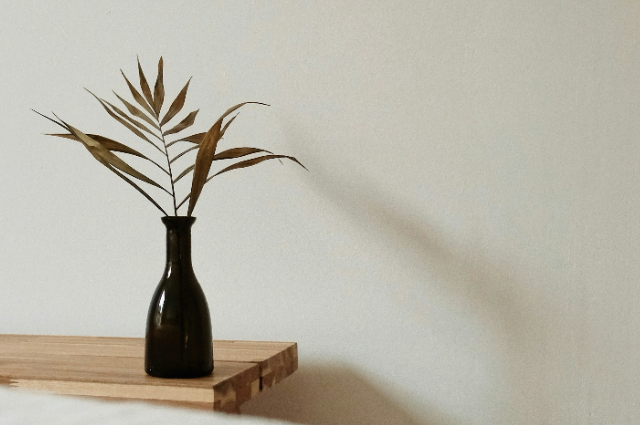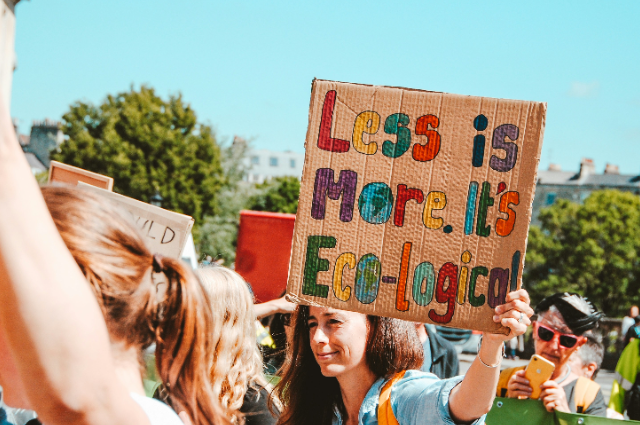
If I had to describe a minimalist lifestyle to you, I would use these four words or phrases: Need. Joy. No clutter. No wastage.
Sustainable life practices such as no-waste, reuse, and recycle are not inventions of the modern world. Had we diligently followed the lifestyle of our ancestors, learned from their ways of living, and respected the natural world, we would’ve had a better world now, and I wouldn’t have written this piece.
There have been considerable talks about the side effects of modernisation. Climate activists and environmentalists around the world are actively advocating for our planet, fighting for the global cause, and standing their ground while facing criticism and hurdles. Concerned citizens are taking up new roles and responsibilities to convey the message and create awareness. Even modern commercial brands are gradually choosing sustainability.
However, on an individual level, have we ever wondered if we are being responsible and doing our bit to save our only planet?
Ancient and medieval Indians, who intentionally led a simple life, would stare in astonishment if they stepped into one of our houses today. Minimalism is not a new concept of the Western world or a crazy lifestyle trend. Simple living did not have a name back then, but has been practiced in our subcontinent from ancient times.
In the past, financially secure and affluent families also chose this life. Our ancestors would pass down material goods to their younger ones so that they wouldn’t have to make additional purchases. They adopted the practices of reuse, recycling, and resourcefulness, and donated to reduce waste. They did not believe in hoarding things in the house. I had once heard an elderly person say how accumulating unloved and unnecessary items at home blocks the good energy of the house. Indians have always respected their homes and believed them to have a life of their own. By regularly brooming and wiping the floors, they would keep the good energy flowing. They would decorate the house on special occasions, not with shiny equipment but with fresh flowers. That is how they kept the soul of the house alive.
Unfortunately, our developing country is struggling to keep this tradition intact within the walls of its houses; the walls, which are never bare these days.
Even though the apartments in today’s urban India are not spacious and can only fit a small family, Indians have no intention of downsizing and/or reducing the clutter. Two television screens in one household or cupboards full of clothes that are hardly worn seem like overindulgence and unnecessary.
Then there are households with multiple living rooms with more than one sofa set, or where gadgets and appliances are upgraded every few months. It is a common practice to pack rooms with chic furniture and modern appliances, even when they aren’t frequently used. How can our eyes not get tired and crave emptiness and openness after a point? Imagine the stress of keeping them in good condition.
Modern Indian culture is perceived as more materialistic. The majority of us are focused on acquiring everything that is trending and publicised by social media influencers. The proud grin on one of my friends’ faces because they finally own fifty pairs of shoes is evidence of the statement I made above. Or a relative’s house, which is packed with every household item on the market. Or a college professor who cannot drive but possesses two SUVs because his peers each have at least one.
The ease of purchasing items has reached astonishing levels, as everything is just a click away and can arrive at our doorstep within minutes. Services like Blinkit and Instamart offer products that were once only accessible through platforms like Amazon. Convenient availability of various branded items enables quick purchases that individuals today seldom regret.
No, it is not about the ‘standard of living’ or about us being more educated and modern than our ancestors. Here, I’m talking about living a sustainable life, where we consciously choose less to create empty spaces.
What exactly is Minimalism?
The Minimalists, or the men at the forefront of the American minimalist movement, Joshua Fields Millburn, Ryan Nicodemus, and T.K. Coleman, define minimalism as “a tool to rid yourself of life’s excess in favor of focusing on what’s important—so you can find happiness, fulfillment, and freedom.”
I came across their show on Netflix a few years ago while exploring this concept. What I interpreted from their documentary was that living a minimalist life takes away a lot of burden and chaos. Life becomes less heavy and less complicated just because you possess less.
But, unfortunately, modern India lives with the opposite belief. In their view, possessing more things is a sign that you’re doing well in life. They seek happiness, contentment, and validation through consumerism. Accumulating material goods at home has become a symbol of affluence and status instead of being about need and happiness.
To give a real-life example of this lifestyle, I was once asked by a ten-year-old why my house didn’t have air conditioners in all the rooms. Similarly, a family with no four-wheeler at home is often frowned upon.
Interestingly, YouTube Shorts and Instagram Reels will introduce you to influencers who worship consumerism as if their lives depend on it. Indians fail to realize how this puts them in a never-ending cycle of debt.
On the contrary, a minimalist way of living slows us down and breaks us from the claws of modern consumerism, helping us save our hard-earned money and precious time.
It helps to lead a life with purpose and without the burden of guilt, overwhelm, and worry. With a simple lifestyle, we reduce the frustration that comes with maintaining material things.
If not handled well, most of the household goods end up in dumping grounds, as very few of us understand the concepts of recycling and/or donating. Living with fewer items at home makes us value what we possess, and we rely more on repairing or donating them.
Minimalism is for everyone.
People with a huge collection of items, such as coin or stamp collectors, antique collectors, do not need to discard their collections to become minimalists, as it is their source of joy.
Anyone can be a minimalist. One could have a joint family and still live a minimalist, simple life. One could be a billionaire and still choose to adopt minimalism. A social butterfly can still choose less that brings joy.
On my first visit to an acquaintance’s home, I noticed an exquisite crockery unit. With four different dinner sets, five tea cup and saucer sets, and three different sets of dessert bowls, the unit stood in one corner of their living room. The beautiful ceramics attracted me like we are to antiques in a museum. I looked through the glass door of the unit and found a speck of dust on some saucers and rust on the fancy spoons at the back. No, none of them were heirloom pieces. And no, as I was told, they do not host guests at home. They deliberately chose abundance in this respect because they were fascinated by chinaware. But if I had a chance to show their lifestyle as a whole, you’d be amazed. They otherwise lived a pretty simple life, consciously choosing less in every other aspect.
It has been observed that our emotions cling to objects. However, it is essential to know that pieces with sentimental value do not need to go away. Things that you don’t need, don’t value, but still possess just for the sake of it or because you’re trying to make it a status symbol, must be let go of.

What Minimalism is not?
Minimalism is not just a ‘way of living’ but a ‘state of mind.’
It is not about living with nothing or depriving yourself. It's a philosophy that focuses on intentionally living with fewer possessions to make room for what genuinely matters to you.
Minimalism encourages letting go of items that lack purpose or fail to add joy to our lives.
It makes space for joy and fulfillment. It lets your house breathe.
As a result, we begin to feel better mentally.
Challenges that modern Indians might face.
We live in a society where some of us criticise minimalists as being ‘underprivileged’ or ‘frugal.’
Sometimes, in certain households, the affluent older generation looks down upon the younger ones for choosing to live a minimalistic and simple life because they’ve always lived in abundance and excess.
The younger generation may experience the fear of missing out on the latest trends and end up comparing their lives with their peers.
Simple Practices for a Minimalist Life.
- Make intentional and needful investments. Limit unnecessary purchases.
- Prefer quality over quantity.
- Choose experiences and memory-making activities, such as a vacation with your family and friends or by yourself.
- Do not store material goods for ‘future use’ if you know deep down you will never use them again.
- Focus on breathing life into your home naturally, using homemade items or flowers straight from your garden or local market during special occasions and festivals. They can be later discarded in composting bins.
- Rotate clothes and donate the ones you no longer like or have outgrown. Resist the temptation to buy new clothes frequently. Rather, make it an occasional practice.
- Practice sustainability in line with your current lifestyle. Do not put immense pressure on yourself by taking on an impossible task of completely changing your life.
Conclusion
Embracing a minimalist and simple way of living is achievable for contemporary Indians. Although it may be difficult, given our dynamic lifestyles, we can look back to our ancestors and the intentional choices they made to prioritize only what was necessary.
Throughout history, our thinkers and leaders have advocated for a lifestyle of simplicity and a release from material obsessions. As we progress towards a more advanced and modern era, Indians must pause to revisit the ancient wisdom that teaches us to live harmoniously with nature. India possesses a profound heritage, including texts that can help us in our efforts to safeguard the environment. By doing so, we can play a part in preserving our planet. Ultimately, we share the responsibility of ensuring that Earth remains livable for future generations, providing them with the resources needed to thrive in a world that will inevitably be more challenging than our own.
